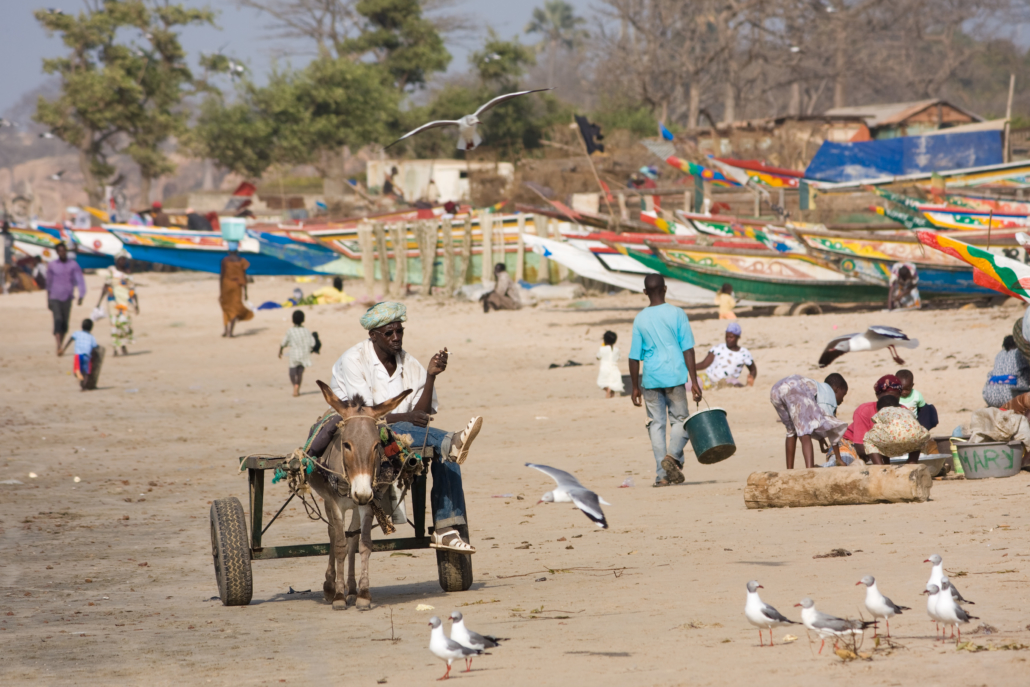10 Facts About Living Conditions in Gambia
 The Gambia is a small West African country with a population of over 2 million. It is surrounded by Senegal on all sides except for a small length of shoreline, and it has the largest population density in the region. As of December 2018, after 22 years of dictatorship that ended with a bloodless coup d’etat, Gambia enjoyed its second year of freedom. While the small country is still healing, poor living conditions in the Gambia are too common, especially where economic security and healthcare are concerned.
The Gambia is a small West African country with a population of over 2 million. It is surrounded by Senegal on all sides except for a small length of shoreline, and it has the largest population density in the region. As of December 2018, after 22 years of dictatorship that ended with a bloodless coup d’etat, Gambia enjoyed its second year of freedom. While the small country is still healing, poor living conditions in the Gambia are too common, especially where economic security and healthcare are concerned.
Top 10 Facts About Living Conditions in the Gambia
- In 2003, 34.3 percent of the country lived on less than one dollar a day. Conditions slightly improved over the past decade and in 2015, only 10.1 percent lived on less than one dollar a day.
- The Food and Agricultural Organization of the United Nations classifies the Gambia as a food-deficit country. This means the Gambia does not produce enough food to meet its own needs and lacks the economic power to fill the gap by importing food. According to FAO, the country only produces enough food for half of its own consumption needs and only 10 percent of the staple rice crop is produced locally.
- Education is compulsory in Gambia between the ages of seven and 15. However, the education system does not reach everybody. According to UNESCO, as of 2018, 72,096 children in Gambia are not attending school. In addition, adult literacy rates are low. Only 55.5 percent of men and 47.6 percent of women were found to be literate in 2015.
- In 2018, the infant mortality in Gambia was 60.2 deaths per 1000 live births. The rate of infant mortality was significantly higher in rural areas than in cities. This is due to the higher risk of diseases such as malaria and pneumonia in rural areas, which are among the leading causes of death in Gambian children under the age of five.
- The maternal mortality rate in Gambia was 706 deaths per 100,000 live births in 2015. According to the World Health Organization, one key factor in the distressing rate of maternal mortality was a lack of proper medical assistance at birth for many mothers. It was estimated that skilled medical personnel attended only 57 percent of births in Gambia.
- Another leading factor in both maternal and infant mortality is malnutrition. Research shows that malnutrition heightens the risk of mortality for both mothers and children. Studies show that lack of nutrition contributes to 45 percent of child mortality. Data from the WHO highlighted that 23.4 percent of children in Gambia suffered from stunted growth and 17.4 percent are underweight. However, while the risks are still high, malnutrition rates have shown a gradual downward trend in recent years.
- A major issue with the Gambian healthcare system is the shortage of doctors and other medical personnel. At least half of all public health workers in Gambia end up leaving the public sector because of low pay and difficult work. While many of these workers join the private sector, many others leave the country altogether. As a result, medical professionals in the public sector are often overworked, and medical resources are stretched dangerously thin.
- In 2015, Gambia had a GINI coefficient of 35.9, meaning that it has moderate inequality. The lowest 10 percent of the country holds three percent of the country’s income share, while the top 20 percent holds 43.6 percent. While there is some inequality, conditions have improved dramatically in the past two decades. The country’s GINI score decreased more than ten points since the late 1990s.
- The average life expectancy in Gambia is 61.4 years. Women’s life expectancy is 63.3 years while men’s is 60.6 years. These numbers are higher compared to the average life expectancy in the Western African region, which is 62 years for women and 59 for men. In addition, there has been a steady upward trend in life expectancy for both sexes over the past decade.
- Gambia’s goal is to eliminate all new malaria cases by 2020. In fact, malaria rates have gone steadily down in recent years. Between 2011 and 2017, the number of new malaria cases went down by 40 percent. It is possible that Gambia may be the first country in the region to eliminate malaria.
Living conditions in Gambia improved slowly but steadily in the past few decades. The country struggled to achieve these improvements and it will most likely continue to be an uphill battle. Hopefully, by continuing to work for improvement, living conditions in Gambia will improve and the country will move away from its past of poverty and toward a brighter future.
—Keira Charles
Photo: Wikimedia Commons
